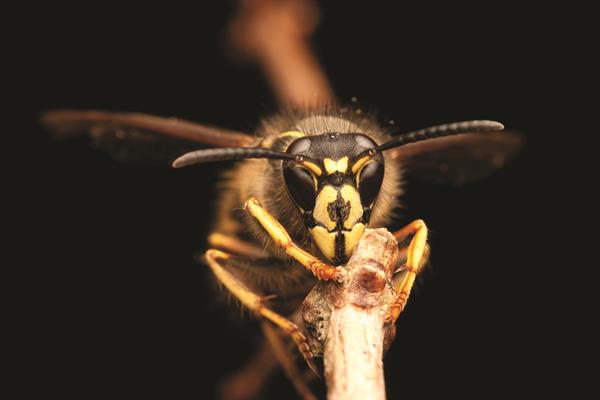Summer brings out a variety of stinging insects, and if you’re like most people, you don’t always know the difference between a bee, a wasp or a yellow jacket. Understanding a few basic facts, however, can help you avoid painful stings. Here, we talk about why we advise you don’t mess with yellow jackets.
Do Yellow Jackets Sting?
Yellow jackets do sting, repeatedly and painfully. Honeybees can only sting once because their stingers contain barbs that remain embedded after they sting, which removes vital organs and kills the bee a short while later. Yellow jackets have smooth stingers they can use to sting multiple times. It’s only the female yellow jackets that sting; males cannot, but they are in the minority in a colony.
Are Yellow Jacket Stings Dangerous?
Yellow jackets are very aggressive when they feel their nest is threatened. When they sting, they inject a small amount of venom, which makes their stings painful. They can be life-threatening if you are allergic or stung repeatedly.
Most people experience pain, redness and swelling at the site, which can be treated with cold compresses, over-the-counter pain relief, or Benadryl. Severe allergic reactions can develop either quickly or within a couple of hours and may be life-threatening. If someone has difficulty breathing or swallowing, develops hives or gets worse as time passes, seek emergency medical care immediately.
How Do I Spot Yellow Jackets?
Yellow jackets are often confused with bees due to their similar coloring and size. But while bees have round, fuzzy bodies, yellow jackets have a nipped waist and have sparse hair. They are also a brighter shade of yellow.
Papery yellow jacket nests can be difficult to spot as they are often built between eaves, in voids, underground or in rotted logs. The openings are usually about the size of a nickel, but the nest can hold as many as 5,000 yellow jackets by the end of summer. Queens are the only ones to survive the winter, and they start building a new nest each year as the weather warms.
What Attracts Yellow Jackets?
Yellow jackets consume nectar from flowers, so they can aid in pollination, but not to the extent of bees. Unlike bees, yellow jackets are mostly attracted to meat proteins, attacking and eating bees, flies and other insects. Because they like meat, fruit and sugary drinks, they are common around picnic areas, garbage cans and recycling bins. To deter them, keep food covered as much as possible, and secure garbage bins with tight lids and clean them regularly with soap and water.
How Can I Remove Yellow Jackets from My Property?
If you have a yellow jacket nest on your property, your best, safest bet is to call for professional help. Our experts are trained to identify the multitude of stinging insects common in our region, find their nests, and develop an effective treatment plan. Many people overestimate the abilities of store-bought sprays and underestimate the size of a nest and the ferocity of its inhabitants.

